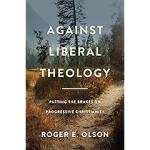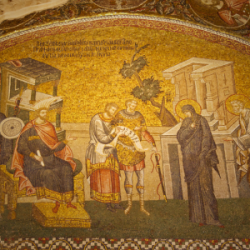The first academic year in Nauvoo was that of 1841-42. The university probably was among the first municipal universities in the United States (Rich, p. 10); it was certainly an optimistic and ambitious undertaking. The curriculum included languages (German, French, Latin, Greek, and Hebrew), mathematics, chemistry and geology, literature, and history; but "the data are too scant to reveal the scholastic rating of the instruction given. It was probably superior to the average secondary work of the time. The faculty represented considerable scholarship and indeed was a rather remarkable group to be found in a frontier city" (Bennion, p. 25).
The murder of Joseph Smith in 1844 abruptly ended the dream of the University of the City of Nauvoo and set in motion the difficult journey to the Great Basin. Despite the hardships, education was not forgotten. Brigham Young instructed the migrating Saints to bring with them at least a copy of every valuable treatise on education -- every book, map, chart, or diagram that may contain interesting, useful, and attractive matter, to gain the attention of children, and cause them to love to learn to read; and, also every historical, mathematical, philosophical, geographical, geological, astronomical, scientific, practical, and all other variety of useful and interesting writings, maps, etc., to present to the General Church Recorder, when they shall arrive at their destination, from which important and interesting matter may be gleaned to compile the most valuable works, on every science and subject, for the benefit of the rising generation [MS 10 (1848):85].
The charter of the University of the City of Nauvoo served as the foundation for the university of Deseret (now the University of Utah), established by Brigham Young in Salt Lake City in 1850. "Education," he once told this school's Board of Regents, "is the power to think clearly, the power to act well in the world's work, and the power to appreciate life" (Bennion, p. 115). He advised: "A good school teacher is one of the most essential members in society" (JD 10:225).
In 1851 the territorial legislature granted a charter providing for "establishment and regulation of schools" (Bennion, p. 40), but for some years the struggle for survival eclipsed the effort to establish a formal system of education. Utah's first schools were private, paid for by parents or by adult students, and classes took place during either the day or the evening, depending on local needs, interests, and resources (Rich, pp. 13, 17-18). Attendance rose and fell with the seasons and the demands of an agricultural society in which human labor was scarce and precious. Curricula varied as well, often depending on the academic strengths or interests of the teacher; some schools offered traditional subjects, others more practical pursuits such as carpentry or masonry. The existence of these frontier schools was always precarious and their operation intermittent (Rich, p. 18), but they were an eloquent and often moving testimony to the commitment of early Mormon pioneers to education, demanding as they did considerable sacrifice of scarce time and resources.
Brigham Young's philosophy of education was practical and pragmatic, but he was not opposed, as has sometimes been assumed, to liberal education; he simply felt it was overstressed in the educational environment of his day (Bennion, p. 107). "Will education feed and clothe you, keep you warm on a cold day, or enable you to build a house? Not at all. Should we cry down education on this account? No. What is it for? The improvement of the mind; to instruct us in all arts and sciences, in the history of the world, in the laws of nations; to enable us to understand the laws and principles of life, and how to be useful while we live" (JD 14:83). He believed that "every art and science known and studied by the children of men is comprised within the Gospel" (JD 12:257).
President Young's educational philosophy was further enhanced by Karl G. Maeser, a German educator who joined the Church and immigrated to Salt Lake City in 1860. In 1876 Brigham Young appointed Maeser the principal of the Brigham Young Academy in Provo (see Academies). "The development of the Academy movement and the direction of Church policies in education were largely determined by this German educator" (Bennion, p. 117). His approach to education included a belief that "knowledge should be supported by corresponding moral qualities. The formation of character depends upon the nature of the moral training which accompanies intellectual advancement" (Maeser, p. 43). He maintained that religion was "the fundamental principle of education" and was its "most effective motive power" (Maeser, p. 56). His influential and widely circulated syllabus, School and Fireside (1898), clearly identified the critical functions of education as preparing people for practical life in the family and in the nation and inculcating fundamental principles of spiritual development.




